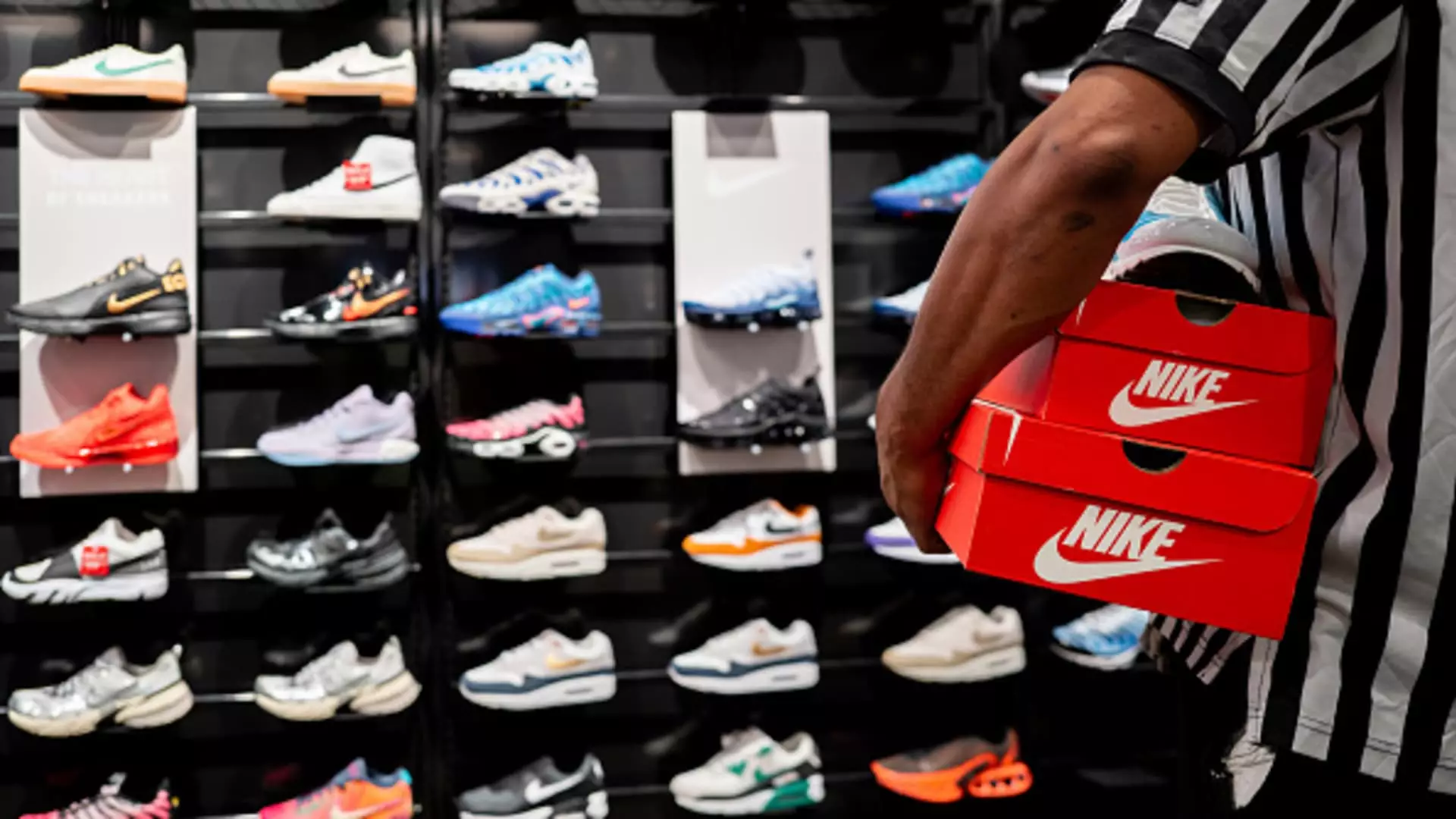As one of the world’s most recognizable brands, Nike finds itself at a critical juncture as it prepares to report its earnings for the fiscal first quarter of 2025. Investors and analysts alike are holding their breath amid expectations that the financial results may not paint a promising picture. With consensus estimates forecasting earnings per share of 52 cents and revenue of approximately $11.65 billion, the anticipated results represent a significant drop—sales are expected to decline by 10% compared to the previous year, while profits could plummet by around 45%. These figures signify not just marginal setbacks but a stark reality check for a company accustomed to growth and innovation.
The leadership transition at Nike, marked by CEO John Donahoe announcing his upcoming departure, adds another layer of complexity to the brand’s current challenges. Donahoe, who oversaw a notable increase in annual sales during his tenure, is being succeeded by Elliott Hill—a seasoned veteran with a 32-year history at the company. Hill’s appointment comes at a time when there is a clear call for rejuvenating Nike’s innovation strategy and enhancing relationships with wholesale partners, which had been neglected in favor of direct-to-consumer sales.
The choice of Hill suggests that Nike’s board recognizes the necessity of stability and familiarity during a somewhat turbulent time. Yet, the question remains whether tradition will be enough to spearhead the innovative spirit once synonymous with the brand. Moving forward, Hill will need to strike a delicate balance between nurturing legacy franchises—such as the ever-popular Air Force 1 and Air Jordan lines—and reinvigorating creativity that lies at the heart of Nike’s ethos.
The Importance of Innovation
For a brand like Nike, innovation has historically served as the driving force behind its success. However, under Donahoe’s leadership, critics argued that the company became too reliant on its established franchises rather than pushing boundaries with new designs and technologies. This stagnation has raised alarms about Nike’s ability to compete in an increasingly crowded marketplace. Analysts often highlight that without fresh and groundbreaking products, Nike risks losing its edge, especially to nimble competitors who are eager to claim a share of the athletic footwear pie.
The necessity for a renewed focus on innovation is further amplified by sluggish consumer spending in discretionary categories, including footwear. According to industry insights, U.S. footwear sales are projected to modestly grow by only 2% in 2024, which doesn’t bode well for a company that has historically led the market. More specifically, athletic footwear, while expected to see some growth of approximately 5.6%, presents its own hurdles, particularly as consumers evaluate their purchases against the backdrop of the current economic climate.
The international landscape presents its own set of challenges for Nike, most notably in China, which stands as its third-largest market. Recent warnings from the brand indicated a “softer outlook” for the region, further complicating expectations for the upcoming earnings report. However, the situation offers a twist; China’s central bank recently unveiled stimulus measures designed to invigorate the economy. While Nike’s fiscal first quarter ended before these measures took effect, they will undoubtedly influence future sales and provide a litmus test for the brand’s performance in a recovering Chinese market.
As financial markets react, Nike’s stock performance offers a clear indication of investor sentiment. The shares closed at $88.40, representing a significant decline of around 19% since the beginning of the year—marking a stark contrast to the S&P 500’s gains. This divergence underscores the urgency with which Nike needs to rectify its course.
As Nike prepares to disclose its quarterly earnings, stakeholders will be looking for insights into how the company plans to navigate through its current trials. With so many headwinds, including operational challenges, an evolving competitive landscape, and fluctuating global markets, the task ahead for both Hill and the brand is formidable. However, if Nike can reignite its innovative capabilities, foster better relationships within the retail ecosystem, and adapt to a rapidly changing economic environment, it may yet reclaim its status as the global leader in athletic footwear and apparel. As investors await the unveiling of these strategies, Nike’s path forward remains crucial not only for the company but for the larger industry it shapes.

